WQIP:2015 is a tool to support users to document and quantify the issues impacting water quality in the region and the Reef. It assembles and presents complex information in a way that can be understood by decision makers and communicated to the broader community so that the process is transparent. It should not be considered a final ranking for action. Rather, it should be used to identify areas to be considered more closely for the potential to undertake specific projects within Neighbourhood Catchments and used in conjunction with other resources such as on-ground knowledge, site-specific data sets and common sense. Both the agricultural and environmental prioritisation process involved a number of complex underlying process that have been combined to give final priority scores. It is important that users understand the strengths and limitations of each of these processes, and the challenges that arise when combining these processes together when determining final priority areas and actions.
Sediment is the main pollutant of concern for the Reef in the Fitzroy Region. The Queensland Department of Agriculture and Forestry led a team of scientists to undertake a mixed-methods approach to determine the priority areas in the catchment that sediment could be reduced in the most cost-effective way. This was undertaken across the farming industry for all 192 Neighbourhood Catchments in the Fitzroy Region. The three key factors considered in this analysis were:
- amount of sediment per hectare that is eroded and delivered to the Reef.
- the effectiveness of current management practices and the likelihood of adoption of new practices.
- the cost of delivering actions in each of the 192 neighbouring catchments on both grazing and farming enterprises.
A detailed description of the approach used can be found here.
An assessment of the relative marine risk posed by each of the rivers in the Fitzroy Region, was made. This included gaining a better understanding of the source and fate of sediment in our region, identifying the type of sediment that is having the greatest impact on Reef health and the proportion of eroded anthropogenic sediment that reaches the Reef.
The above information was integrated to identify priority areas, gain an understanding of the drivers in these areas and to identify management options to improve Reef water quality. These findings were refined through discussion with local, on-ground field staff who are familiar with the local landscape and some of the key issues affecting soil health. The final priority catchments are shown below. Select a Neighbourhood Catchment to see a description of the recommended management actions for that catchment.
A conceptual diagram of how the above information was integrated to form the final prioritisation below can be found here.
Click the map below to view a description of each neighbourhood catchment in the Fitzroy Region.

